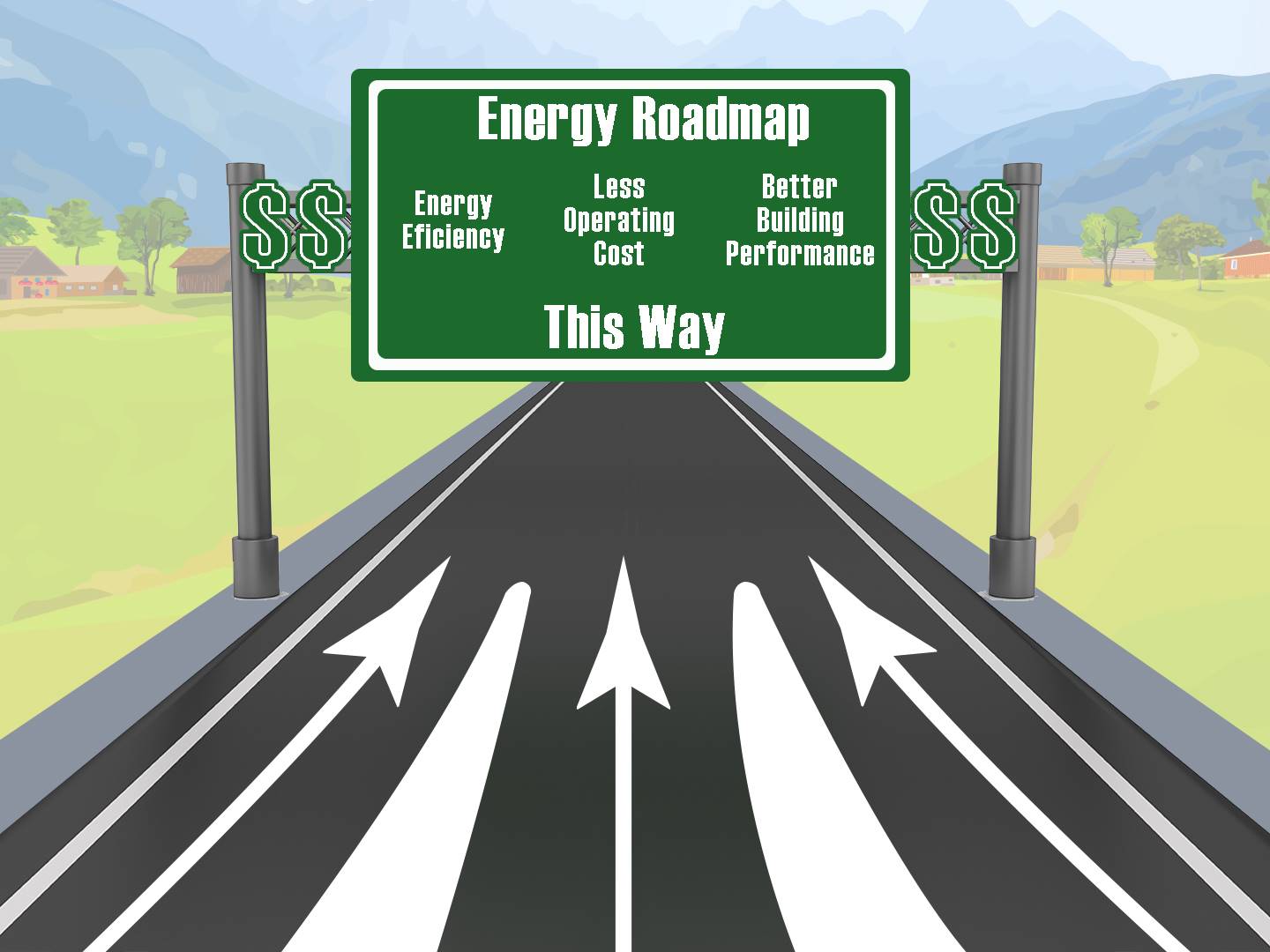
An energy roadmap assists an owner (corporate, institution, government entity, etc.) and their facilities’ operations group in forecasting, prioritizing and budgeting with respect to the energy-related demands of their buildings, processes and transportation requirements. It helps establish goals, policies and procedures for their employees, partners and constituents, improving energy efficiency and encouraging behaviors that save energy and costs. A roadmap can be divided into five main topics:
- Reviewing baseline demand and consumption against recognized benchmarks
- Establishing goals
- Implementation strategies to achieve the goals
- Budgeting or funding sources required for implementation
- Methods for tracking progress or assessing adjustments to the roadmap
Baselines and benchmarks: These terms are often confused. An organization’s baseline performance (energy demand, consumption, etc.) is established over a specific baseline year. Benchmarking, however, compares a facility’s performance to an average performance against appropriate peer groups or an established best practice level.
Utility and fuel bills are commonly monitored; however, the effort to balance and subdivide the processes, services and systems consuming the greatest percentage of energy is often neglected. This is important to identify targets for energy reduction.
While various metrics can be used in benchmarking, comparing one’s buildings to similar buildings by type, usage and geographic location, the most common is energy use intensity (EUI). This metric represents the annual energy consumed within a facility (in kBtus) divided by its total area in square feet. The U.S. Environmental Protection Agency’s Energy Star and ASHRAE’s Building Energy Quotient (bEQ) programs are examples of energy performance rating systems that provide the means to benchmark the energy efficiency of buildings and plants against the energy performance of similar facilities.
Other metrics used for tracking energy consumption include: Btu per unit of product (assembly), Btu per pound of product (manufacturing), Btu per number of occupied beds (hotel or hospital) and miles per gallon (transportation/vehicle fleet).
Establishing goals: Goals are a critical part of the roadmap. Although they can be driven by various factors, operational cost savings is the most common. Opportunities to cut expenditures by reducing energy demand and consumption can be identified in a number of ways, including reducing the average EUI rating(s) by a percentage, establishing targets for Btus per square foot, exceeding energy code targets and increasing fleet miles per gallon.
However, many firms have complementary goals influencing the need for energy conservation, such as:
- Reducing greenhouse gas emissions and their carbon footprint
- Obtaining a sustainability certification (LEED®, Green Globes, WELL) to demonstrate good stewardship of the environment
- Increasing the use of renewable energy sources (solar photovoltaic, wind, hydropower) to increase resiliency and energy security
All established goals must be measurable for tracking and evaluating on a scheduled basis.
Next month, part II of this article will detail the remaining three main topics of an energy roadmap.
Do you need help with an energy roadmap? Contact Robert Knoedler at rknoedler@hanson-inc.com or Imane El Ghazouani at ielghazouani@hanson-inc.com.